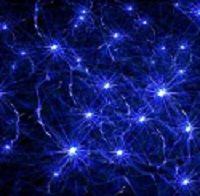Ion Pump Offers New Hope for Neuropathic Pain
Researchers have demonstrate the efficacy of an implantable organic electronic delivery device for the treatment of neuropathic pain in an animal model. The small organic electronic ion pump could be an effective option for patients suffering from severe nerve pain.

The results of 10 years of research published in Science Advances demonstrate the efficacy of an implantable organic electronic delivery device for the treatment of neuropathic pain in an animal model. The small ion pump in organic electronics could be a sign of new hope for patients suffering from severe nerve pain.
The study investigators—from Linköping University and the KarolinskaInstitutet in Sweden—predict that the implantable ion pump could be in clinical use in 5 to 10 years. For now, the device offers hope to the 7% of people worldwide for whom no other cure has been found to successfully treat their nerve pain.
The team used “electronically and ionically conducting polymers to design a device that could be implanted and used for local electrically controlled delivery of therapeutics. The conducting polymers in [their] device allow electronic pulses to be transduced into biological signals, in the form of ionic and molecular fluxes, which provide a way of interfacing biology with electronics.”
“The ion pump can be likened to a pacemaker, except for alleviating pain,”said senior author Magnus Berggren, PhD, MSc, professor of organic electronics and head of the research conducted by Assistant Professor Daniel Simon, PhD, and PhD student Amanda Jonsson at the Laboratory of Organic Electronics at Linköping University's Campus Norrköping, in collaboration with Dr. Zhiyang Song of the Department of Clinical Neuroscience at KarolinskaInstitutet, where Professor Bengt Linderoth leads the preclinical side of the project.
For the study, the ion pumps were implanted onto the spinal cords of rats. After two days, local delivery of the inhibitory neurotransmitter γ-aminobutyric acid (GABA) was initiated. The local delivery meant that pain impulses were delivered directly to where affected nerves came into contact with the spinal cord and never reached the brain.
“Highly localized delivery resulted in a significant decrease in pain response with low dosage and no observable side effects,” wrote the study authors. “This demonstration of organic bioelectronics-based therapy in awake animals illustrates a viable alternative to existing pain treatments, paving the way for future implantable bioelectronic therapeutics.”
Use of organic electronics—which are capable of easy translation between electronic and biochemical signals— to block pain impulses in awake, freely moving rats is a technological breakthrough according to the study team. The ion pump allows for positively charged ions to be administered in four locations, adapted according to the exact spots where the targeted nerve endings meet the spinal cord. Sending an electronic current through the ion pump enables the GABA neurotransmitter to be spread at these precise locations.
“What's unique is that we’re using organic electronics to send the body’s own chemical signals,” said Simon. “The organic materials are easily accepted by the body, and they communicate just as in biology—with charged ions.”